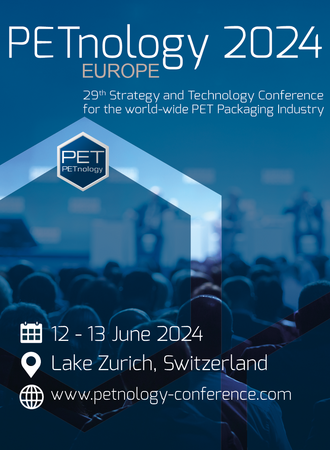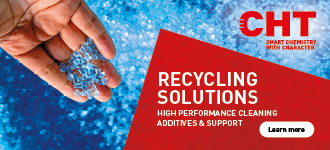| The lack of high quality food-grade rPET material is hampering the aspirations of brand owners and fillers to increase the amount of rPET used in their packaging portfolio, according to APPE, the Packaging Division of LSB. |
APPE and its sister company Artenius are the market leaders in the manufacture of PET preforms and containers, and virgin PET resin, as well as the largest food-grade PET recycler in Europe, with extensive experience and expertise in remanufacture with rPET. This unique position has given the company a detailed perspective of the challenges facing the recycling market.
The company supplies many leading global brands, some of which are driving the demand for greater rPET usage as they seek to reduce the environmental impact of their packaging, in line with the industry’s drive for sustainability, reduced carbon footprint and also consumers’ increasing awareness of environmental issues.
In his presentation, The Challenges of Recycling for Food-Grade Application, M. Blanchard said that brand owners perceive rPET as a solution to their sustainability objectives and a way to communicate environmentally friendly credentials to consumers. However, some also incorrectly perceive it as a cost-reduction initiative.
APPE has already responded to the surge in demand for rPET by investing a further 10 million euros at Beaune, increasing its output by 40% from 25,000 to 35,000 tonnes. Further expansion of the facility is now being considered; however this could be constrained simply by the lack of post-consumer PET for processing.
“Two of the major challenges facing rPET recycling for food-contact applications are the availability and quality of bale feed-stock,” explained M Blanchard. “European reclamation capacity is increasing through the entrance of new but inexperienced recyclers into the market, but the collection of suitable material is not rising at the same pace. This imbalance of demand and supply is causing the price of the raw material – post-consumer PET bales – to rise to record highs, albeit recently price levels have dropped significantly as such high price levels were unsustainable. Longer term prices are set to rise once again and to track virgin PET pricing.”
While stringent technical specifications have been put in place for the supply of virgin resin, comparable requirements have not been established for rPET. APPE has implemented its own highly demanding specifications for rPET production, but other inexperienced food grade rPET producers have not yet introduced such measures. In order to maintain quality and safety, food-contact end-use customers must therefore adopt high-quality standards and ensure that closed-loop food-grade rPET is truly food-approved.
In addition, only 22% of rPET produced in Europe is currently reused in rigid PET packaging that can be recycled time and time again. The balance is used in applications such as sheeting, fibres and strapping, meaning that 78% of rPET is not returning to the closed-loop cycle.
APPE believes that the biggest challenge of all is getting the brand-owners and fillers to understand the huge complexities involved in processing rPET into new packaging while maintaining the necessary quality controls. Additional activities such as blending, process controls and changeovers all lead to increased costs.
“The greatest contradiction faced by rPET producers and processors is that despite these complexities and their cost implications, the industry still expects rPET to be cheaper than virgin resin,” said M. Blanchard.
He believed there are several potential solutions for the current situation, from better consumer awareness and education in order to improve collection rates and sorting, to establishing a realistic vision of rPET content and enhancing bottle technologies to support the recycling stream.
As the expert in food-grade PET production and use, APPE is leading the way with the highest quality food-grade rPET globally, and is currently looking at introducing further recycling friendly initiatives.
“The challenges of stepping up rPET usage, which several brands are now driving, are clear and we feel it is important that the industry understands the full picture,” concluded M. Blanchard.
“APPE’s Beaune facility produces a consistent high quality supply but the industry as a whole needs to look to the material collection systems to keep pace in order to satisfy customers’ requirements. Increased regulation also has a part to play. Until then, the potential for bottle-to-bottle rPET will always be limited by the amount of recycled material available.”
| Kinza Sutton Marketing Manager Tel: 44 1978 317378 kinza.sutton@arteniuspackaging.com |







